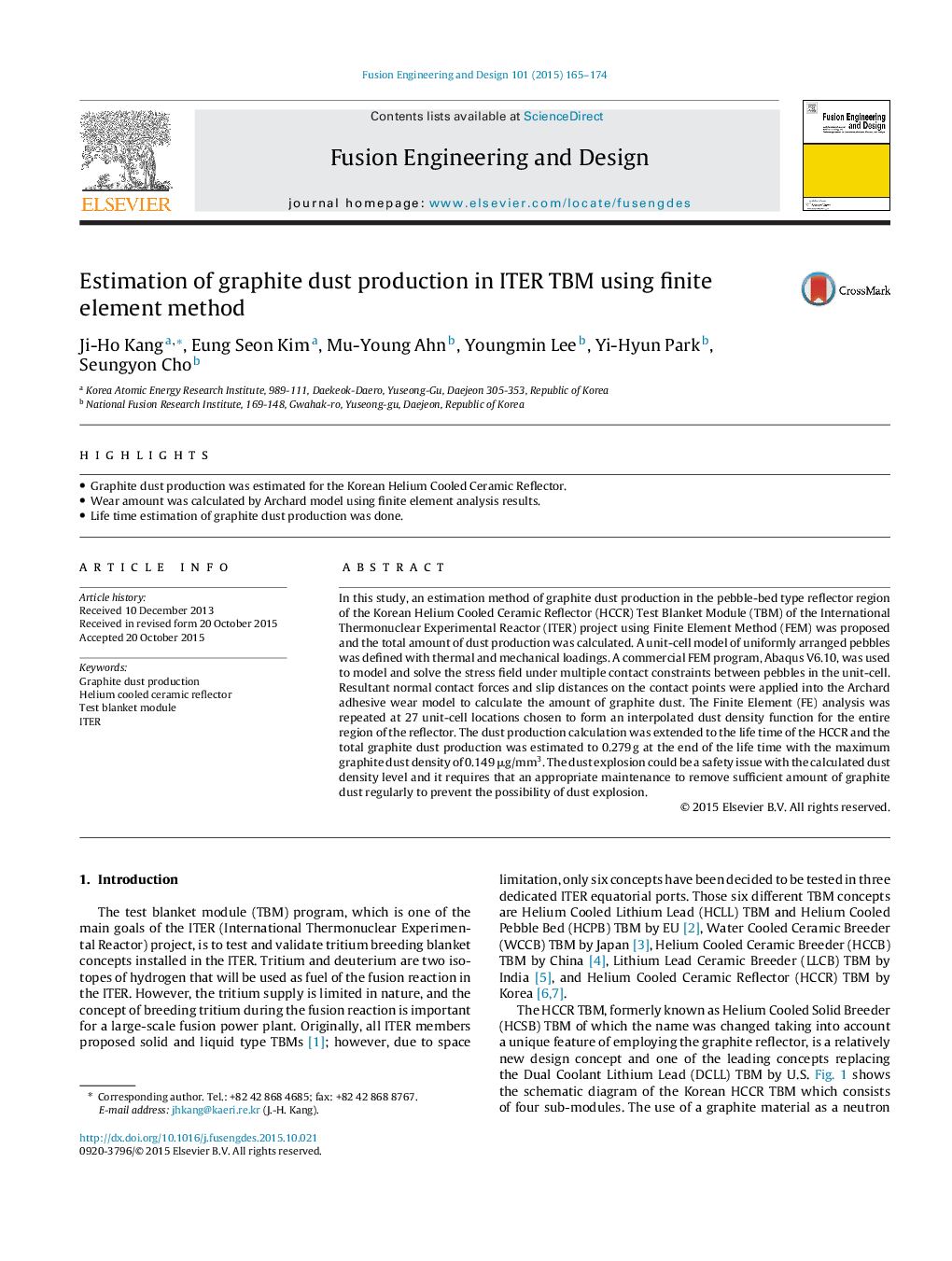| کد مقاله | کد نشریه | سال انتشار | مقاله انگلیسی | نسخه تمام متن |
|---|---|---|---|---|
| 270937 | 504975 | 2015 | 10 صفحه PDF | دانلود رایگان |

• Graphite dust production was estimated for the Korean Helium Cooled Ceramic Reflector.
• Wear amount was calculated by Archard model using finite element analysis results.
• Life time estimation of graphite dust production was done.
In this study, an estimation method of graphite dust production in the pebble-bed type reflector region of the Korean Helium Cooled Ceramic Reflector (HCCR) Test Blanket Module (TBM) of the International Thermonuclear Experimental Reactor (ITER) project using Finite Element Method (FEM) was proposed and the total amount of dust production was calculated. A unit-cell model of uniformly arranged pebbles was defined with thermal and mechanical loadings. A commercial FEM program, Abaqus V6.10, was used to model and solve the stress field under multiple contact constraints between pebbles in the unit-cell. Resultant normal contact forces and slip distances on the contact points were applied into the Archard adhesive wear model to calculate the amount of graphite dust. The Finite Element (FE) analysis was repeated at 27 unit-cell locations chosen to form an interpolated dust density function for the entire region of the reflector. The dust production calculation was extended to the life time of the HCCR and the total graphite dust production was estimated to 0.279 g at the end of the life time with the maximum graphite dust density of 0.149 μg/mm3. The dust explosion could be a safety issue with the calculated dust density level and it requires that an appropriate maintenance to remove sufficient amount of graphite dust regularly to prevent the possibility of dust explosion.
Journal: Fusion Engineering and Design - Volume 101, December 2015, Pages 165–174